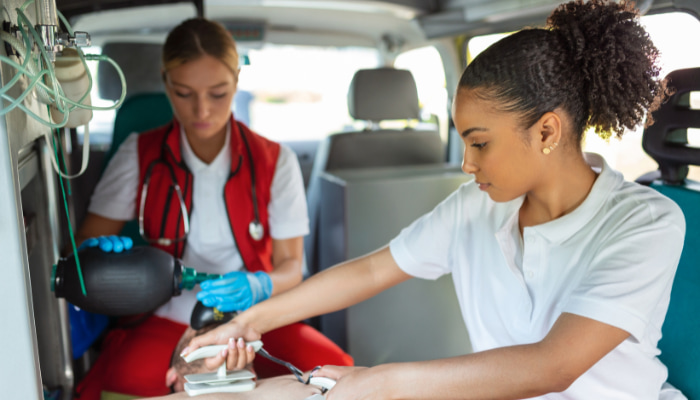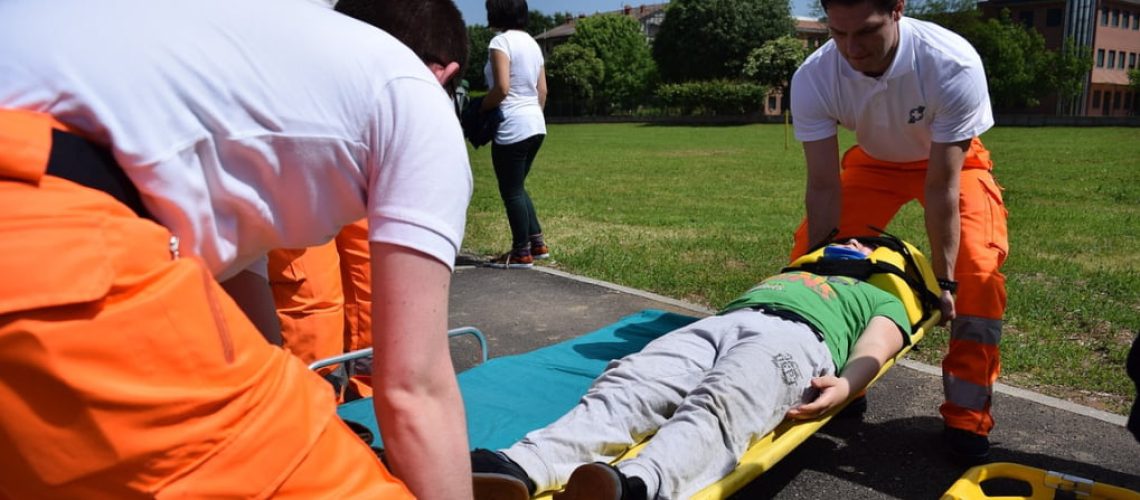Date Published: November 9, 2022
Emergencies happen when you least expect them. This is why you should always be prepared. Whether you are at the pool, the beach, in the middle of the desert or simply walking in the mall, understanding how to administer first aid could save someone’s life. So what exactly is the role of an emergency first aider? The main aims are to ensure the area is safe, call the emergency services, and then keep the casualty alive by performing CPR and using an AED until professional help arrives. Let’s take a closer look at the role of an emergency first aider.
Preserve Life
Preserving life and keeping someone alive is central to all emergency first aid. This can involve different things, but the most important thing is to check whether the casualty is breathing normally: if they are, great! If they’re unconscious and breathing normally we then need to do things to keep them breathing normally; if they’re conscious and breathing normally we need to check if there is any serious bleeding. If there is, we need to stop that bleeding and make them comfortable. Every situation is different, and how we deal with that situation will make a difference.
Picture this: you’re out in public with friends and someone in your group faints and stops breathing. What do you do? The first step is to ensure the area is safe. Are there any hazards that could cause harm to you or the emergency services? For example, what if your friend was crossing the road? Start by safely moving them to the sidewalk so that you are both out of harm’s way.
But perhaps your friend was hit by the car? In this case, you would not want to move the injured person. Instead, you must decide on the best way to stop traffic from causing injury to yourself or others. An emergency responder will learn more about securing the scene from professional trainers during their first aid course. Our first aid training courses will also teach you how to get help quickly and communicate effectively with emergency services.
Giving Cardio-Pulmonary Resuscitation (CPR)
In some emergency situations, the first aider may need to administer Cardio-Pulmonary Resuscitation (CPR). This should be done when an individual is unresponsive and has stopped breathing. CPR is when a trained person does repeated chest compressions on an individual whose heart has stopped working properly; it involves doing a series of chest compressions and rescue breaths which keep the casualty’s blood circulating and supplies oxygenated blood to the brain. CPR will buy the casualty time until an AED arrives.

Using an Automated External Defibrillator (AED)
You have secured the scene and made it safe. The casualty is not breathing and you have started CPR: now you need an AED. In recent years AED machines have become more readily available in public places. Once turned on they will give voice prompts and talk the user, step by step, through the process of delivering a controlled electric shock to restart the heart and restore circulation. Using an AED will greatly improve your casualty’s chances of survival. The single biggest determinant of survival rates is how quickly an AED can used. The combination of CPR and AED should be used until the individual shows signs of life (opens their eyes, starts breathing again, etc) or until the emergency services have arrived and taken over.
Administering Basic First Aid
If you’re lucky the situation won’t be so severe. Perhaps you will only be responsible for giving basic first aid like applying pressure and a bandage to stop bleeding, or treating a minor burn under cool running water. Even though these situations aren’t as serious as giving a casualty CPR and using an AED, they are still important skills. Knowing what to do in each individual situation is important. By preserving life, preventing the casualty deteriorating, and promoting recovery you have fulfilled the aims of an effective first aider. You will have helped a casualty and put them on a path to a fast recovery.
First Aid Training Course with Blueguard
Prepare for an emergency with one of Blueguard’s many first aid training courses. Whether you need an Emergency First Aid Training Course, Pediatric (child and infant), wilderness (remote locations), or regular first aid course we’ve got you covered! Each class is thoughtfully designed with the student in mind. Our innovative courses are reputable, professional, and informative. Are you ready to become an emergency first aider?
If you’re interested in taking a first aid training course, contact a member of the Blueguard team today!

Kim Beasley
Lifeguard & First Aid Instructor





